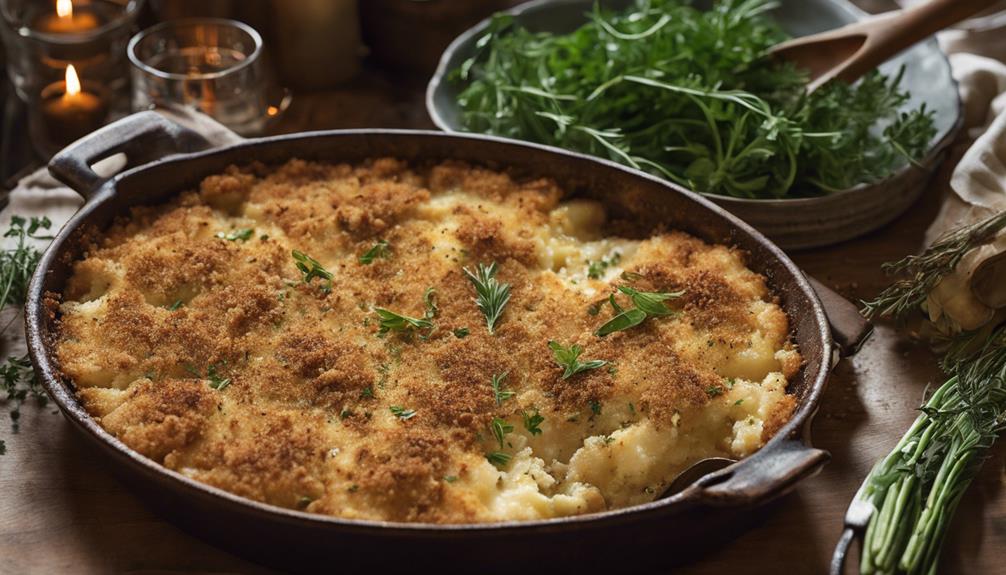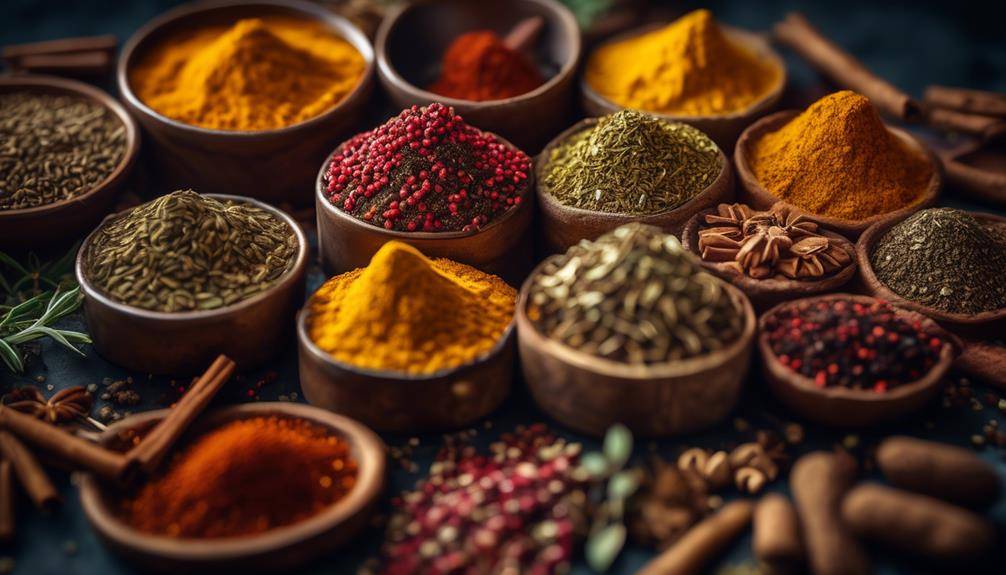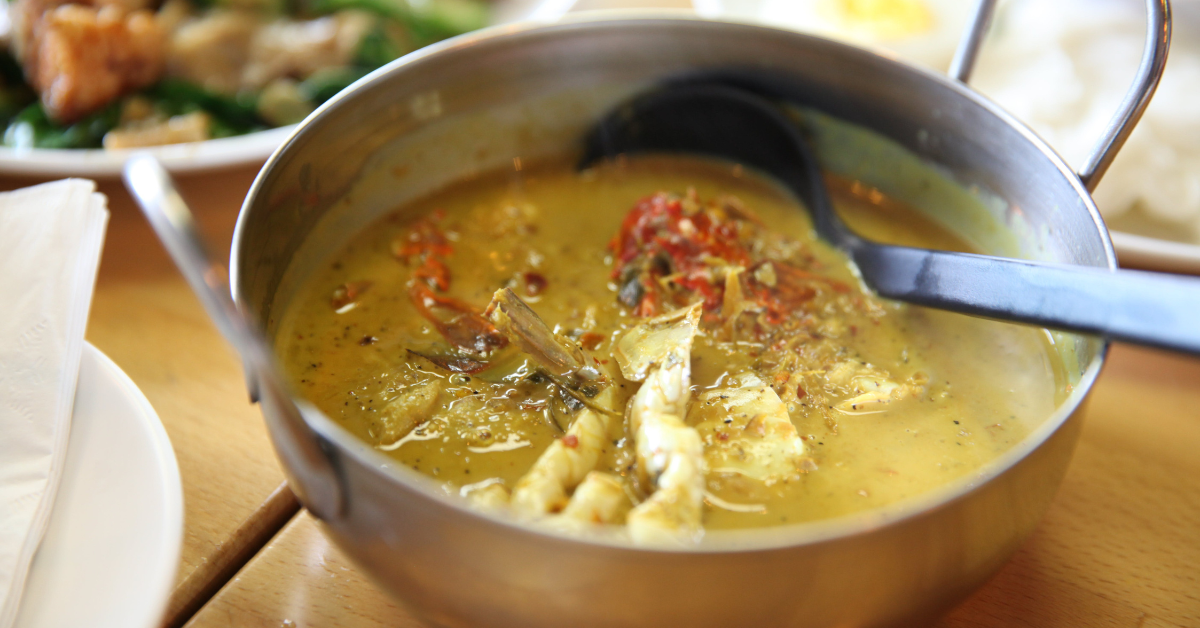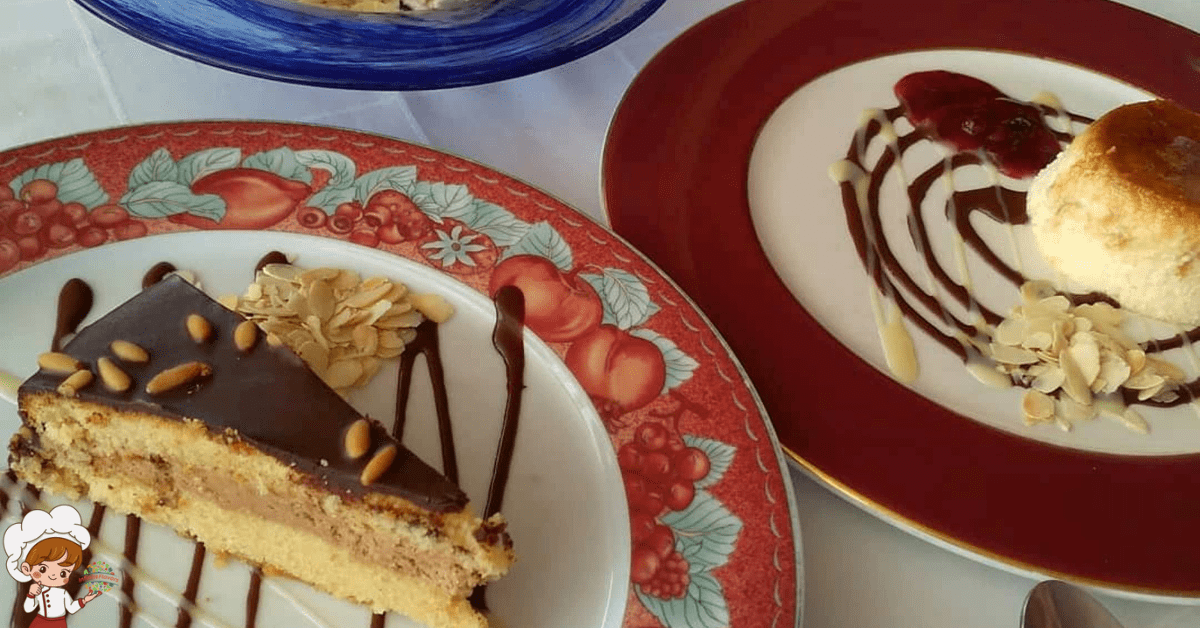The Best Authentic Japanese Katsu Curry Dishes
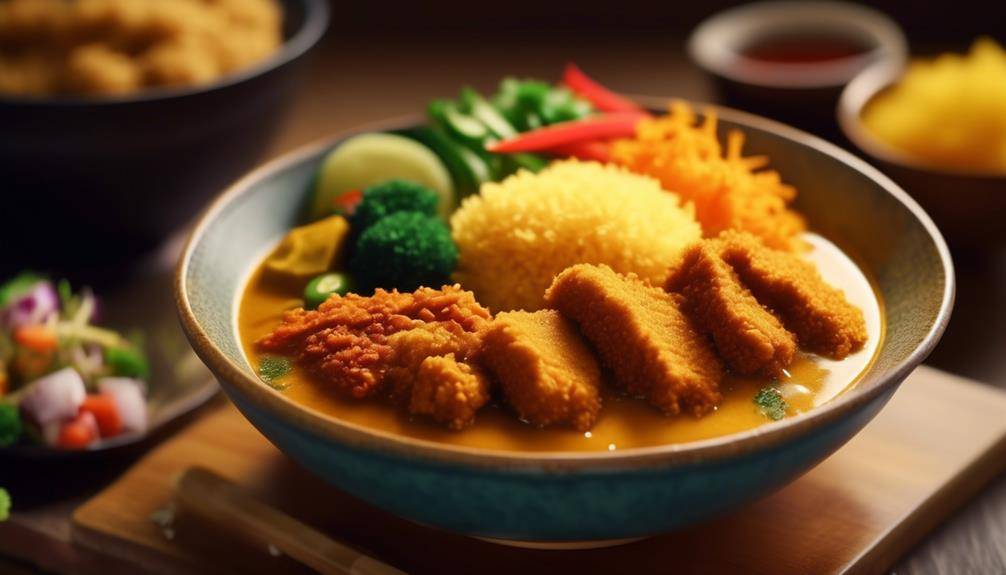
Imagine stepping into a bustling Japanese kitchen, the air thick with the aroma of sizzling cutlets. Authentic Japanese Katsu Curry Dishes are like hidden treasures waiting to be discovered, each bite a symphony of flavors that dance on your palate. From the origins of Katsu Curry to the unique twists and variations, there is so much to explore and savor. So, grab your chopsticks and prepare to embark on a culinary journey that will leave you craving for more.
Origins of Katsu Curry
The origins of Katsu Curry can be traced back to Japan, where it emerged as a flavorful and satisfying dish loved by many. Katsu Curry is a delightful combination of crispy breaded cutlets, known as katsu, and a rich, aromatic curry sauce. Its origins can be traced to the late 19th century, during the Meiji era, when Japan opened its doors to foreign influences and embraced Western cuisine.
The cultural significance of Katsu Curry lies in its ability to seamlessly blend Japanese and Western culinary traditions. The dish is believed to have been inspired by Western-style breaded meats, which were introduced to Japan by European settlers. However, the Japanese people added their own unique twist to the dish by incorporating their traditional curry sauce, resulting in a harmonious fusion of flavors.
Katsu Curry quickly gained popularity in Japan and became a staple dish in households and restaurants alike. It is often enjoyed as a comforting meal during colder months, providing warmth and satisfaction. The dish’s popularity also spread beyond Japan’s borders, with Katsu Curry gaining a global following.
Today, Katsu Curry is not only cherished for its delicious taste but also for its cultural significance. It represents the adaptability and creativity of the Japanese people in embracing foreign influences and making them their own. Katsu Curry has become an iconic dish that showcases the unique blend of flavors and culinary traditions that Japan has to offer. Whether enjoyed in a traditional Japanese restaurant or cooked at home, Katsu Curry continues to captivate food enthusiasts around the world with its rich history and delightful flavors.
Key Ingredients for Authentic Katsu Curry
To create an authentic and flavorful Katsu Curry, certain key ingredients are essential in order to achieve the perfect balance of taste and texture. Katsu Curry is a popular Japanese dish that originated in the late 19th century, combining elements of Japanese cuisine with Western influences. This fusion resulted in a delicious combination of crispy breaded cutlets, rich curry sauce, and fragrant rice. The traditional variations of Katsu Curry vary slightly in terms of ingredients and preparation methods, but they all share a few key components that are crucial to achieving authenticity.
The key ingredients for authentic Katsu Curry include:
- Meat: The most common choice for Katsu Curry is breaded and deep-fried pork cutlets, known as tonkatsu. However, variations with chicken, beef, or even seafood are also popular. The meat should be tender and juicy on the inside, with a crispy and golden-brown coating on the outside.
- Curry Sauce: The curry sauce is the heart of the dish, providing a rich and aromatic flavor. It is made from a combination of spices, vegetables, and a roux base. The spices typically include curry powder, turmeric, and garam masala, which give the sauce its distinctive taste.
- Rice: Katsu Curry is traditionally served with steamed Japanese short-grain rice. The rice acts as a neutral base, allowing the flavors of the curry sauce and meat to shine. The rice should be fluffy and slightly sticky, providing the perfect contrast to the crispy cutlets and savory sauce.
Traditional Katsu Curry Variations
As we explore the realm of traditional Katsu Curry variations, we uncover a multitude of tantalizing options that showcase the diverse culinary creativity within this beloved Japanese dish. Traditional Katsu Curry recipes have been passed down through generations and can vary in terms of the meat used, the curry sauce, and the accompanying ingredients.
One popular variation is the Chicken Katsu Curry, where tender chicken cutlets are breaded and deep-fried to perfection. The crispy exterior contrasts beautifully with the rich and savory curry sauce, creating a harmonious balance of flavors. This variation is commonly found in popular Japanese restaurants and is a favorite among locals and tourists alike.
Another traditional variation is the Pork Katsu Curry, which features succulent pork cutlets instead of chicken. The tender and juicy pork pairs wonderfully with the aromatic curry sauce, resulting in a dish that is both satisfying and comforting. This variation is often served with shredded cabbage and pickled vegetables, adding a refreshing crunch to the overall experience.
For those seeking a vegetarian option, there is the Vegetable Katsu Curry. In this variation, a medley of vegetables such as eggplant, sweet potatoes, and mushrooms are breaded and fried until golden brown. The curry sauce ties all the flavors together, creating a hearty and flavorful dish that is sure to please even the most discerning palate.
These traditional Katsu Curry variations are just a glimpse into the world of possibilities when it comes to this beloved Japanese dish. Whether you prefer chicken, pork, or vegetables, there is a Katsu Curry recipe out there that is sure to satisfy your cravings and transport you to the vibrant streets of Japan.
Unique Twists on Katsu Curry
With a culinary landscape constantly evolving and chefs pushing the boundaries of traditional dishes, unique twists on Katsu Curry have emerged, offering a delightful fusion of flavors and textures. These innovative variations take the classic Japanese dish to new heights, incorporating unexpected ingredients and cooking techniques. Here are some remarkable examples that showcase the creativity and ingenuity of chefs:
- Seafood Surprise: Imagine biting into a crispy, golden-brown katsu cutlet only to discover a succulent piece of shrimp or tender octopus inside. This twist on Katsu Curry combines the rich flavors of seafood with the satisfying crunch of the breaded coating, creating a delightful contrast that tantalizes the taste buds.
- Vegetarian Delight: For those who prefer plant-based options, there are unique variations of Katsu Curry that cater to their dietary choices. Instead of using meat, chefs substitute it with tofu or vegetables like eggplant or pumpkin. These vegetarian twists still retain the signature crispy texture and aromatic curry sauce, satisfying both vegetarians and meat-lovers alike.
- Fusion Flavor Explosion: Some chefs take inspiration from different cuisines to create Katsu Curry with a twist. Imagine a Mexican-inspired variation featuring a katsu cutlet topped with melted cheese, guacamole, and salsa, served with a side of cilantro-infused rice. These innovative combinations bring together the best of multiple culinary traditions, resulting in a truly unique and unforgettable dining experience.
- Spicy Sensation: Heat seekers will appreciate the twists on Katsu Curry that incorporate spicy elements. From adding chili flakes to the breading mixture to infusing the curry sauce with fiery spices like cayenne pepper or sriracha, these variations take the heat to a whole new level, satisfying those who crave a little extra kick in their meals.
These twists on Katsu Curry demonstrate the boundless creativity and culinary prowess of chefs who are constantly reinventing traditional dishes. By incorporating unexpected ingredients, flavors, and cooking techniques, they breathe new life into this beloved Japanese classic, offering a delightful and unforgettable dining experience.
Vegetarian and Vegan Katsu Curry Options
Culinary innovators have not only pushed the boundaries of traditional Katsu Curry, but they have also embraced the growing demand for vegetarian and vegan options, offering a delectable array of plant-based twists on this beloved Japanese dish. Whether you follow a vegetarian or vegan diet, you can still indulge in the rich flavors and satisfying textures of Katsu Curry.
For those seeking a vegetarian katsu recipe, tofu is often the go-to protein substitute. By coating thick slices of tofu in a crispy breadcrumb coating and frying until golden brown, you can achieve a similar crunchy exterior to the traditional pork version. The tofu absorbs the savory curry sauce, adding a velvety texture and absorbing all the flavors.
If you’re following a vegan diet, there are even more options available. Instead of tofu, you can use vegetables like eggplant or mushrooms as the main ingredient for your katsu. Eggplant, when breaded and fried, becomes tender and succulent, while mushrooms offer a meaty texture and earthy taste. Both options pair beautifully with the aromatic curry sauce, creating a satisfying vegan katsu dish.
To cater to the growing demand for vegan katsu options, some restaurants have even started using meat substitutes, such as seitan or tempeh, as the base for their katsu. These plant-based proteins mimic the texture and taste of meat, providing a more familiar experience for those transitioning to a vegan lifestyle.
With the increasing popularity of vegetarian and vegan diets, it’s heartening to see the culinary world adapt and offer plant-based alternatives to traditional dishes like Katsu Curry. These innovative twists on the classic dish prove that you don’t have to compromise on flavor or enjoyment, no matter your dietary preferences.
Tips for Making Perfectly Crispy Katsu Cutlets
To achieve perfectly crispy katsu cutlets, it’s important to pay attention to three key points. First, using a combination of breadcrumbs and panko will give your cutlets an extra crunch. Second, the double coating technique, where you dip the cutlets in flour, egg, and then breadcrumbs twice, ensures a thick and crispy crust. Lastly, maintaining the proper frying temperature of around 350°F (175°C) will prevent the cutlets from becoming greasy and help them cook evenly.
Breadcrumbs and Panko
For the perfect crispiness in your katsu cutlets, achieve a golden brown exterior by using high-quality breadcrumbs or panko. Breadcrumbs alternatives can include crushed cornflakes or crushed crackers, but the traditional choice for katsu cutlets is panko. Panko is a type of Japanese breadcrumb that is lighter and airier than regular breadcrumbs, resulting in a crunchier texture. It was introduced to Japan in the late 1800s by Portuguese traders and quickly became popular in Japanese cuisine. Panko is made from crustless white bread, which is processed into large flakes that give katsu cutlets their signature crispy coating. Using panko ensures that your katsu cutlets will have a light, delicate crunch that perfectly complements the tender meat inside.
Double Coating Technique
To achieve the perfect crispiness for your katsu cutlets, mastering the art of the double coating technique is essential. This technique involves dipping the meat or vegetable in flour, then egg, and finally in breadcrumbs or panko. The double coating creates a thick and crispy outer layer while keeping the inside moist and tender.
The first layer of flour helps the egg to adhere to the meat more effectively, while the second layer of breadcrumbs adds an extra crunch. It is important to press the breadcrumbs firmly onto the meat to ensure an even coating. While the double coating technique is the traditional method for making katsu cutlets, there are also alternative breading methods, such as using crushed cornflakes or even crushed potato chips, which can add a unique flavor and texture to your katsu dish.
Proper Frying Temperature
What is the key to achieving perfectly crispy katsu cutlets? Proper frying temperature is crucial in achieving that satisfying crunch while keeping the meat tender and juicy. Here are some tips for achieving crispy cutlets through proper frying techniques:
- Maintain the oil temperature: Make sure the oil is heated to around 350°F (175°C) before adding the cutlets. This allows the breading to crisp up quickly without absorbing too much oil.
- Use a thermometer: To ensure accuracy, use a kitchen thermometer to monitor the oil temperature throughout the frying process.
- Avoid overcrowding: Fry the cutlets in batches, allowing enough space for them to cook evenly. Overcrowding the pan can result in uneven browning and soggy crust.
- Flip gently: When flipping the cutlets, use tongs or a spatula to avoid disrupting the breading. This helps maintain the crispy texture on both sides.
Pairing Katsu Curry With Japanese Side Dishes
When it comes to enjoying katsu curry, the side dishes you choose can make all the difference in creating a balanced and satisfying meal. Traditional Japanese accompaniments like miso soup, pickled vegetables, and steamed rice are excellent choices to complement the rich and flavorful curry. These side dishes not only provide contrasting textures and flavors, but also enhance the overall dining experience by offering a variety of tastes that harmonize with the katsu curry’s deep and savory notes.
Side Dishes for Katsu Curry
A perfect complement to the rich and flavorful Katsu Curry are the traditional Japanese side dishes that enhance the dining experience. These side dishes are not only delicious but also provide a balanced meal. Here are some traditional accompaniments to pair with Katsu Curry:
- Steamed Rice: A staple in Japanese cuisine, steamed rice is the perfect base for the curry sauce. The fluffy texture of the rice helps to absorb the flavors of the curry, creating a harmonious combination.
- Miso Soup: A bowl of warm miso soup adds depth and complexity to the meal. It is made from fermented soybean paste, and its savory taste complements the spiciness of the curry.
Alternatively, if you’re looking for alternative side dishes, consider:
- Pickled Vegetables: These tangy and crunchy vegetables add a refreshing contrast to the rich and heavy flavors of the curry.
- Japanese-style Coleslaw: Made with cabbage, carrots, and a light dressing, this coleslaw provides a fresh and crunchy side that balances the richness of the curry.
These side dishes not only enhance the dining experience but also provide a well-rounded meal that satisfies both the palate and the appetite.
Traditional Japanese Accompaniments
To fully enjoy the rich and flavorful Katsu Curry, it is essential to pair it with traditional Japanese accompaniments that elevate the dining experience. These accompaniments not only enhance the taste of the dish but also provide a balance of flavors and textures. One of the most popular traditional Japanese accompaniments for Katsu Curry is pickled vegetables, such as daikon radish or cucumber. Their tangy and refreshing taste complements the richness of the curry perfectly.
Additionally, a side of steamed rice is a common choice to accompany Katsu Curry. The fluffy and slightly sticky texture of the rice acts as a neutral base that helps to balance the spiciness of the curry. Finally, a simple salad with fresh greens and a light dressing can add a crisp and refreshing element to the meal. These traditional Japanese accompaniments enhance the overall dining experience and bring out the best flavors in Katsu Curry.
Perfect Flavor Combinations
Pairing Katsu Curry with traditional Japanese side dishes creates perfect flavor combinations that enhance the dining experience. The perfect seasoning of Katsu Curry, with its rich, savory sauce and crispy breaded cutlets, is complemented by a variety of popular katsu curry variations. Here are two sub-lists that will help you paint a picture of the perfect flavor combinations:
1. Traditional Japanese Side Dishes:
- Miso Soup: The umami flavors of miso soup, made from fermented soybean paste, perfectly balance the richness of Katsu Curry.
- Pickled Vegetables: The tangy and refreshing taste of pickled vegetables provides a delightful contrast to the deep flavors of the curry.
2. Accompaniments for Added Texture and Flavor:
- Steamed Rice: The fluffy and steamed rice acts as a neutral base, allowing the flavors of the curry to shine.
- Japanese Coleslaw: The crunchy texture and light dressing of Japanese coleslaw adds a fresh and crisp element to the meal.
Where to Find the Best Katsu Curry in Japan
For those craving the ultimate katsu curry experience in Japan, look no further than the hidden gem tucked away in the bustling streets of Tokyo. The city is home to some of the best katsu curry restaurants in the country, offering a wide variety of flavors and preparations that will satisfy even the most discerning palate.
One of the most popular katsu curry restaurants in Tokyo is called CoCo Ichibanya. With multiple locations throughout the city, this establishment is known for its delicious curry sauce and perfectly breaded katsu. They offer a range of toppings to choose from, including classic options like pork, chicken, and beef, as well as more unique options like shrimp and vegetable katsu. The curry sauce is rich and flavorful, with just the right amount of spice to tantalize your taste buds.
Another must-visit spot is Katsukura, located in the heart of Tokyo. This restaurant is famous for its melt-in-your-mouth katsu, made from high-quality pork that is breaded and fried to perfection. The breading is light and crispy, while the meat remains tender and juicy. The curry sauce is made from a secret blend of spices that adds depth and complexity to the dish. Popular toppings at Katsukura include cheese, egg, and even melty mozzarella, which take the katsu curry experience to a whole new level.
If you’re looking for a more traditional experience, head to Maisen in Tokyo’s Omotesando district. This restaurant has been serving up katsu curry since 1965 and is known for its classic, old-school vibes. The katsu here is made using a time-honored recipe that has been passed down through generations, resulting in a dish that is both comforting and delicious. The curry sauce is rich and velvety, while the katsu is crispy on the outside and tender on the inside.
No matter which restaurant you choose, you can’t go wrong with katsu curry in Tokyo. These hidden gems offer the best of both worlds – the comforting flavors of curry and the satisfying crunch of katsu. So, next time you find yourself in Japan, make sure to indulge in this delectable dish and experience the true essence of katsu curry.
Japanese Katsu Curry Dishes; Frequently Asked Questions
How Many Calories Are Typically in a Serving of Katsu Curry?
Typically, you’ll find that a serving of katsu curry contains a certain amount of calories. However, it’s important to note that along with the calorie count, katsu curry also provides various health benefits.
Can I Substitute Pork With Another Meat in Katsu Curry?
Yes, you can substitute pork with another meat in katsu curry. Some popular options include chicken, beef, or even seafood. If you prefer a vegetarian option, you can use tofu or vegetables instead.
Is Katsu Curry a Spicy Dish?
Katsu curry is a traditional Japanese dish that combines crispy breaded meat with a flavorful curry sauce. While it can be spicy depending on the recipe, there are also milder variations available.
Can I Make Katsu Curry Without Using Breadcrumbs?
You can definitely make katsu curry without using breadcrumbs! There are alternative coatings like panko, crushed cornflakes, or even crushed nuts. Plus, you can explore vegetarian options by using tofu or vegetables instead of meat.
Are There Any Gluten-Free Options for Katsu Curry?
You can enjoy gluten-free katsu curry by substituting breadcrumbs with alternatives like almond flour or crushed rice crackers. Additionally, you can try using chicken or tofu instead of pork for a delicious variation.
Conclusion
In conclusion, authentic Japanese katsu curry dishes are a flavorful and satisfying option for anyone looking to indulge in traditional Japanese cuisine. With its origins rooted in Japan and a variety of key ingredients, there are numerous variations and unique twists to explore. Vegetarian and vegan options also make this dish accessible to all. By following tips for creating perfectly crispy katsu cutlets and pairing it with Japanese side dishes, you can elevate your katsu curry experience. Don’t miss the opportunity to try the best katsu curry in Japan for an unforgettable culinary adventure.



